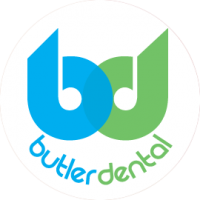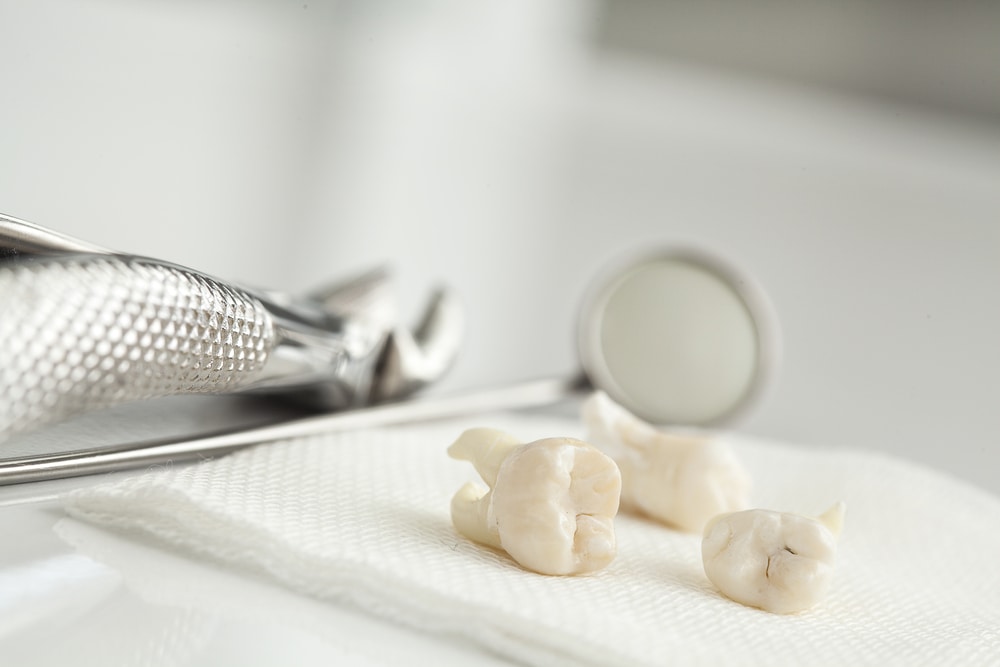Tooth extractions are a common dental procedure that many people need from time to time. Whether a tooth is impacted, decayed, or needs to be removed for orthodontic reasons, extracting a tooth can be an effective solution.
While the procedure is often associated with pain, there are measures that can be taken to reduce discomfort and ensure the best possible outcome. This article will provide information about what a tooth extraction is, reasons for extracting a tooth, what to expect during an extraction, recovery after a tooth extraction, pain management, and potential complications and alternatives to extractions.
What Is a Tooth Extraction
When it comes to treating painful teeth, a tooth extraction is often necessary. It is a dental procedure performed by an oral surgeon or a dentist to remove a damaged, decayed, or impacted tooth. Tooth extractions are common for wisdom teeth, adult teeth, and permanent teeth that are severely damaged due to tooth decay, gum disease, or injury.
The patient will be given a local anesthetic before the tooth extraction procedure to numb the area and reduce the risk of pain and discomfort. During the process, the dentist or oral surgeon will use various tools to loosen the tooth from the gums and extract it. After the tooth has been successfully removed, the dentist will cover the area with a gauze pad to stop the bleeding.
Once the extraction is complete, it is important to follow the dentist’s aftercare instructions. This may include taking prescribed medication, avoiding certain foods or activities, and getting adequate rest. It is also essential to visit the dentist regularly for follow-up dental treatments to ensure that the mouth is healthy and the risk of infection is minimized.
Tooth extractions are common dental procedures that can provide relief from severe pain and discomfort. It is important to consult a dentist or oral surgeon to determine the best course of treatment for your tooth problem. With the right care and attention, you can say goodbye to pain and ensure a healthy, beautiful smile.
Reasons for Extracting a Tooth
Although the effects of a damaged or decayed tooth can be painful, there are many other reasons why tooth extractions may be necessary. One of the most common reasons for a tooth extraction is periodontal disease, which is an infection of the gums and surrounding tissue caused by bacteria. A dentist may also recommend a tooth extraction if a patient has visible teeth crowding or if there is not enough room in the mouth for all of the teeth. Another reason for an extraction is to prepare for orthodontic treatment. A tooth may also need to be extracted if it has been damaged beyond repair due to an accident or injury.
In some cases, a simple extraction can be done in the dentist’s office using a local anesthetic. However, more complicated extractions may require a surgical approach, and in those cases, the patient will be put under general anesthesia. After a tooth has been extracted, it is important to follow the post-operative instructions provided by the dentist to ensure proper healing. This may include applying ice packs to the area to reduce swelling and taking antibiotics as prescribed. It is also important to avoid drinking with a straw and to rinse the mouth with warm water and salt, as this can help to prevent a dry socket.
What to Expect During an Extraction
Before undergoing a tooth extraction, it is important to understand what to expect during the procedure. Tooth extraction is a common treatment for a diseased, damaged, or impacted tooth that cannot be restored by root canal therapy. It is a type of dental surgery that involves the removal of teeth and surrounding tissues from the tooth socket. Extracting teeth can also be necessary to allow for dental implants, correct overcrowding, or remove wisdom teeth.
Conscious sedation is often used during surgical removal of teeth to help reduce anxiety and pain. The dentist will first inspect the area to determine the size and shape of the tooth, the number of roots, and the condition of the surrounding tissue. Hemostatic measures may be taken to reduce bleeding. Depending on the type of tooth and the level of difficulty in extracting it, nerve injuries may occur.
The dentist may also use a local anesthetic to numb the area during the extraction. A mandibular nerve block, or alveolar nerve block, may be used to reduce the risk of nerve injury subsequent to the extraction. The dentist and patient will discuss the risks vs benefits of the extraction before proceeding.
Post-operative pain is also a common side effect of tooth extraction, although acute pain management is available to help relieve the discomfort. The dentist may recommend a site-specific risk management plan to reduce the risk of mandibular osteonecrosis. In the absence of teeth, dentures, bridges, and implants can be used to replace the normal teeth and restore the shape of the jaw.
Recovery After a Tooth Extraction
Once the tooth extraction procedure is complete, the recovery process can begin. A patient’s medical history is important to assess in order to determine the best course of action for the individual. After the procedure, a sedative dressing is usually placed in the extraction area to help with the healing process. Routine extractions can take anywhere from one to two weeks to recover from.
Gum tissue and bone tissue may need to be removed if the patient is suffering from overcrowding of teeth, severe tooth decay, or extra teeth due to orthodontic treatment. Additionally, if a root canal has been performed to treat a bacterial infection, nitrous oxide or buccal infiltration may be used to reduce pain.
According to Ellis E and Tucker MR, it is important to take the necessary steps to maintain a healthy smile after a tooth extraction. This includes avoiding smoking, eating soft foods, and using ice packs to reduce swelling. Chronic tooth infections can also be treated with a pelican for tooth pulling.
Recovery after a tooth extraction is unique to each individual. Proper care and attention are necessary to ensure the best healing process, and always consult with your dental professional for advice. With the right preparation and care, patients can achieve a healthy smile and improved quality of life.
Pain Management
It is important to manage pain after a tooth extraction, and many people find relief through various treatments and medications. To ensure that the procedure is successful and the patient is comfortable, it is important to understand the potential risks and available options to minimize discomfort.
During a tooth extraction procedure, the alveolar bone, lingual nerve, and surrounding tissue must be carefully considered. In addition, the tooth must be extracted without damaging the surrounding teeth or gum tissue. After the extraction, clot formation must occur in order for the patient to heal and move forward with future implant or molar surgery.
There are several sedation options available for those who experience anxiety or fear during the procedure. Patients can choose from local anesthetic, general anesthetic, or nitrous oxide. Additionally, medications such as Sarikov R and Afzal Z may be used to reduce inflammation and pain. Depending on the complexity of the extraction, a patient may need to stay in the hospital for a few days or take certain medications for up to a week.
It is important to follow the dentist’s instructions carefully and keep the wound clean and dry during the healing process. To reduce the risk of complications, patients should avoid smoking, drinking alcohol, and using a straw. Additionally, a soft diet should be followed, and contact sports should be avoided.
The dentist and the patient can work together to ensure a successful outcome and minimize post-operative pain. Through a combination of preventive measures, medications, and careful monitoring, a patient can experience a successful recovery and get back to their daily activities. With the right treatment and care, pain after a tooth extraction can be managed so that the patient can move forward with their life.
Complications
Occasionally, complications can arise after a tooth extraction. While the majority of tooth extractions are successful, there is a risk that a severe infection could develop. This is especially true if the tooth being extracted is diseased or located in a difficult-to-reach area, such as posterior teeth or wisdom teeth. According to the literature review by Hupp Jr. and a comprehensive review of concepts by a review of literature, infection can be a serious problem if not treated properly. If left untreated, it can lead to a variety of health problems, including pulmonary disease.
To help prevent infection, it is important to follow your dentist’s instructions before and after the extraction. This includes proper oral hygiene and a healthy diet. Additionally, your dentist may prescribe antibiotics to help prevent infection. If you experience any unusual pain, swelling, or redness in the area, contact your dentist right away.
Alternatives to Extractions
In some cases, exploring alternative treatments can help to alleviate the need for a tooth extraction. Before considering a tooth extraction, it is important to consider all possible alternatives that may help reduce the pain and discomfort.
One potential alternative to a tooth extraction is root canal therapy. Root canal therapy can be effective in eliminating pain and preserving the natural tooth.
Another alternative is the use of dental crowns or fillings, which can help to restore the tooth and protect it from further damage. Additionally, orthodontic treatments can be used to help reposition teeth and keep adjacent teeth from coming into contact with each other.
When considering alternatives to tooth extraction, it is important to consider the long-term effects. Many treatments can provide temporary relief, but they may not be able to prevent the need for a tooth extraction in the future.
Ultimately, it is important to consult with a dentist to determine the best course of action. A dentist can help to identify any underlying issues that may be causing discomfort, and they can provide recommendations for treatments that can help to reduce the risk of needing a tooth extraction in the future.
Key Takeaways
A tooth extraction is a procedure that removes a tooth from the mouth. It is typically done to alleviate pain, remove decay, or prepare the mouth for orthodontic work.
Depending on the complexity of the extraction, the process can take anywhere from a few minutes to a few hours.
Post-extraction care is important to ensure proper healing. Pain management is also important to ensure comfort. Complications can occur if proper care is not taken, including infections and dry sockets.
Alternatives to extractions are available, such as root canals, and should be discussed with a dentist to determine the best option.
If you are in need of a tooth extraction or would like to explore the alternatives, Butler Dental in Butler, WA, is here to help. We offer a wide range of options to make sure your teeth are taken care of in the best way possible. Our team of experienced dentists will work with you to determine the best solution for your situation. Contact us today to schedule an appointment and get started on the road to dental health.

